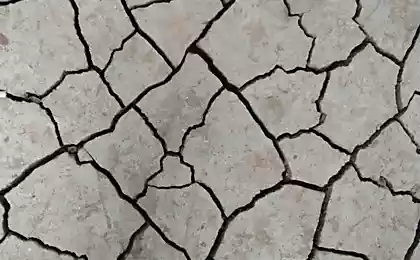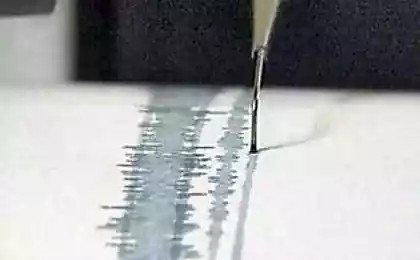631
Interesting facts about earthquakes
Among all natural disasters, earthquakes stand out as the least predictable and the most destructive. They cause significant damage, and since the old has not appeared, no definitive means of predicting earthquakes. The only lesson that we have learned from past earthquakes — what needs to be created quick response that allow you to save significant number of lives and minimize losses.
Flash
For many centuries, witnesses reported mysterious flashes that appear in the sky for moments before strong earthquakes. These lights described by many witnesses as a bright flash, a blue flame or a weak rainbow that appear from the ground and sometimes stretched to a distance of 200 meters. Until the 1960s geologists have regarded it as a hallucination, because there were no pictures, or videos. However, everything changed in the mid-1960s, when a series of earthquakes struck Nagano Prefecture, Japan. Have skeptical geologists have a great chance to register and finally acknowledge the phenomenon. Several theories have been advanced concerning the formation of these outbreaks. One of them involves the destruction of the Earth's magnetic field piezoelectric effect, which is caused by quartz rocks in the region of tectonic stress. However, not every earthquake is preceded by the lights and flashes, because the theory is not yet proven definitively.

Liquefaction of soils
Many of us know about the shifting Sands and marshes, capable of swallowing a man. In reality, quicksand is not as scary as they show in many movies. However, there is another form of quicksand, which is really terrible is the liquefaction of soils. In addition to tsunamis and landslides, liquefaction negative impact of earthquakes. This phenomenon occurs when soft, water saturated soils are subjected to strong tremors of the earthquake, losing strength and stiffness. As a result, any object on this ground (e.g., buildings, roads, or vehicles), just falls to the ground. It happened in 1964, when a combination of earthquake and liquefaction of soils ruined 16,534 building in the city of Niigata, Japan. Liquefaction was also cause enormous damage to roads and houses during the earthquake of Christchurch in 2011.

Storm theory
Kind of ruined buildings and a lot of victims — that's not all the terrible consequences of the earthquake. Unfortunately, there is also a storm theory of earthquakes. Nominated by Stanford teacher Amos Nur after studying several ancient and modern earthquakes, the theory assumes that the only earthquake can cause a series of other large earthquakes along the boundary of the same tectonic plate. Subsequent earthquakes could take place months, or even years. Theory Nur supported by a series of large earthquakes that occurred along the North Anatolian basin in Turkey between 1939 and 1999. Of the 13 major earthquakes that struck the region, seven occurred in a systematic way. Each successive earthquake occurred to the West of the previous quake. Nur substantiated by the stormy theory of earthquakes transfer stress occurring after each of them.

Lake Reelfoot
You might think that earthquakes only bring death and destruction, but this is not always true. Lake Reelfoot in Tennessee is a good example of the positive effects of the earthquakes. The lake was created during the new Madrid earthquakes that occurred in the Mississippi Valley between 1811 and 1812 years. When one of these quakes struck the region, many witnesses reported that the Mississippi river flowed backwards for several hours. This phenomenon was caused by “fluvial tsunami” in the river. The earthquake also triggered a drawdown region in the range of 1.5-5.9 meters, which allowed the waters of the river to come up and form a lake. Over the years, the new lake has become a natural habitat for many species of animals and plants. Currently, the lake Reelfoot is a popular location for boating, hunting and fishing.
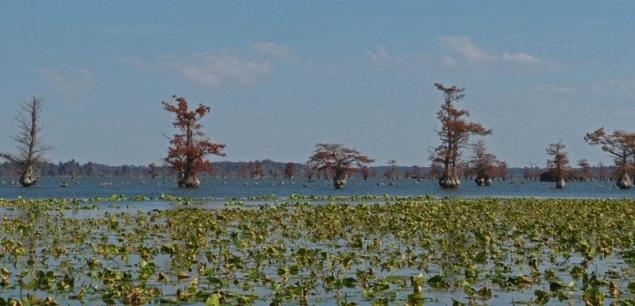
Icy shivers
Ice quake (also called ice quiver) occur when the moisture trapped beneath the ground suddenly freezes and expands. This sudden expansion creates a pressure, forcing the ground to crack, making a characteristic shrill sound. About the ice quakes are often reported in Canada and northeastern United States, often mistaking them for earthquakes. This rare phenomenon can occur when the temperature falls quickly below zero. The process may be followed by a similar tremor, but unlike the earthquake, its effects are local and do not affect too large areas. In some cases, people within a few hundred meters from the epicenter do not even notice. Because of their rarity, there is no scientific information about the ice shiver. Most of the information that we have, based on the narratives of the witnesses and the news. These phenomena are absolutely safe, except for the horrendous noise that they produce.
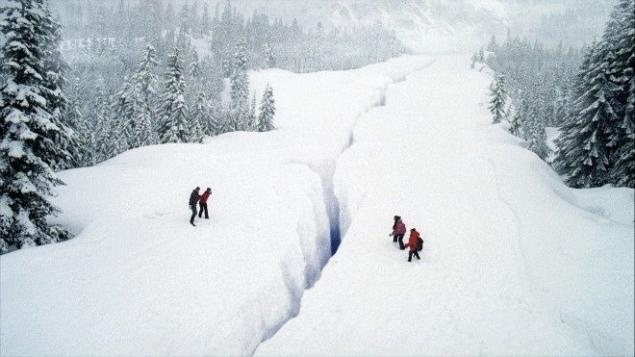
Moving city
One of the biggest earthquakes in the world occurred in Chile because of the proximity of the country to the so-called Ring of Fire, where two huge tectonic plates pressed against each other. In 2010, one particular earthquake was marked by the scientific community as one of the most important earthquakes ever studied. It was not a compliment, as the earthquake has killed 523 people and left 1.5 million homeless. The earthquake was so powerful that moved the entire city of Concepcion 3 meters to the West. Concepcion was not the only city displaced by the earthquake. The process has also affected the Chilean capital Santiago, which shifted approximately 28 inches, and Buenos Aires, who managed to overcome almost 4 inches. These changes were observed by teams from four American universities, who conducted the study region before and after an earthquake measuring 8.8 points.

Concetrate
Earthquakes occur not only on our planet. According to scientists, even the Sun feels the seismic waves similar to earthquakes on Earth. The phenomenon, which is referred to as canceractive, was first observed on 9 July 1996, when a solar flare produced an earthquake at 40,000 times the energy released in a devastating earthquake struck San Francisco in 1906. Canceractive equivalent to the earthquake in 11.3 points created waves resembling water ripples. However, unlike water ripples that goes with constant speed, the waves from concetrate accelerated from an initial speed of 35,000 kilometers per hour to 400,000 before to disappear in the photosphere of the Sun. According to Dr. Craig Deforest, researchers from NASA and ESA, the released energy was equal to full coverage of the Earth with dynamite and sudden explosion.
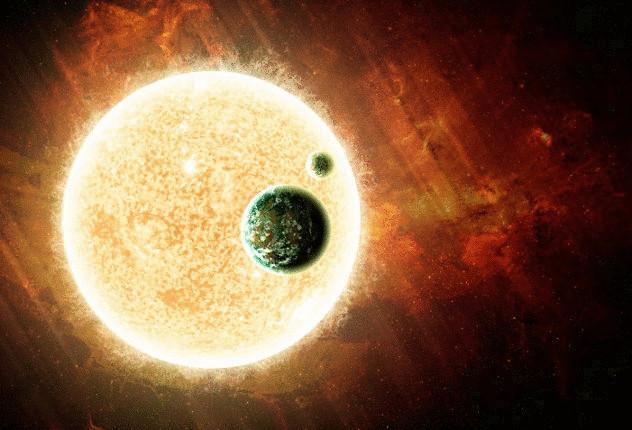
Earthquakes caused by man
Our impact on the Earth is not limited to air, land and sea. It extends deep into earth's crust, the most vulnerable place. As we know, natural earthquakes are caused by movement of tectonic plates of the Earth, but human activity can also produce earthquakes of different seismic effects. One of the main reasons of unnatural earthquakes — injection of fluids such as oil or water, deep into the ground in an industrial or environmental purposes. This occurs most often during the shale gas extraction method of hydraulic fracturing. Of fluids increases underground pressure, which can weaken adjacent layers. Once the pressure reaches its threshold voltage is produced in the form of an earthquake. Another cause of unnatural earthquakes — extraction of groundwater caused the devastating earthquake of Lorca in 2011. Water was extracted from the sources to feed the city. Mass extraction of water has caused voltage changes in the earth's crust, which ultimately led to the earthquake.

Island Earthquake
On the morning of 24 September 2013, an earthquake of 7.7-magnitude struck southwest of Balochistan, Pakistan. This has resulted in the emergence of a new island 2 kilometers from the coast of the city of Gwadar. The island, which was given the name Zalzala Jazeera (“the Island of the Earthquake”), as I believe, is a mud volcano. Despite the significant attention of the international community, the emergence of many of the island was unsurprising. Older residents of the coastal city saw an island, which appeared in the same place after the earthquake in 1968. Reaching 18 metres in height and over 175 metres in length, Zalzala Jazeera became a popular attraction in the region. However, this will not last too long, as images from NASA Satellites showed that the island began to disappear again.
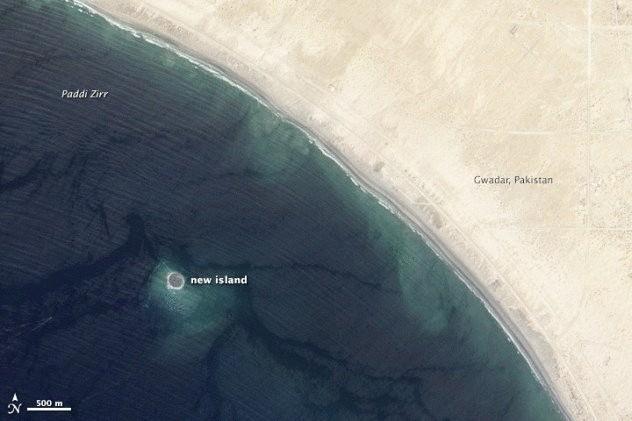
Effect on time
In addition to moving cities, liquefaction of soil, and large tsunamis, earthquakes also able to accelerate the rotation of our planet. That's what NASA scientists observed after the earthquake at 8.9 points that hit the coast of Japan in 2011. Their analysis showed that an intense earthquake has accelerated the Earth's rotation, shortening the day by 1.8 microseconds. This acceleration was caused by a change in the distribution of the mass of the planet closer to the equator. This is not the only observation of this effect. The same thing happened after the Sumatra earthquake in 2004, which shortened the day by 6.8 millionths of a second. Then again when the Chilean earthquake of 2010, which accelerated the rotation of the Earth on 1.26 millionths of a second. At the time, how these changes might seem quite small, if you combine all this time — you will get a significant result.
Source: lifeglobe.net/
Flash
For many centuries, witnesses reported mysterious flashes that appear in the sky for moments before strong earthquakes. These lights described by many witnesses as a bright flash, a blue flame or a weak rainbow that appear from the ground and sometimes stretched to a distance of 200 meters. Until the 1960s geologists have regarded it as a hallucination, because there were no pictures, or videos. However, everything changed in the mid-1960s, when a series of earthquakes struck Nagano Prefecture, Japan. Have skeptical geologists have a great chance to register and finally acknowledge the phenomenon. Several theories have been advanced concerning the formation of these outbreaks. One of them involves the destruction of the Earth's magnetic field piezoelectric effect, which is caused by quartz rocks in the region of tectonic stress. However, not every earthquake is preceded by the lights and flashes, because the theory is not yet proven definitively.

Liquefaction of soils
Many of us know about the shifting Sands and marshes, capable of swallowing a man. In reality, quicksand is not as scary as they show in many movies. However, there is another form of quicksand, which is really terrible is the liquefaction of soils. In addition to tsunamis and landslides, liquefaction negative impact of earthquakes. This phenomenon occurs when soft, water saturated soils are subjected to strong tremors of the earthquake, losing strength and stiffness. As a result, any object on this ground (e.g., buildings, roads, or vehicles), just falls to the ground. It happened in 1964, when a combination of earthquake and liquefaction of soils ruined 16,534 building in the city of Niigata, Japan. Liquefaction was also cause enormous damage to roads and houses during the earthquake of Christchurch in 2011.

Storm theory
Kind of ruined buildings and a lot of victims — that's not all the terrible consequences of the earthquake. Unfortunately, there is also a storm theory of earthquakes. Nominated by Stanford teacher Amos Nur after studying several ancient and modern earthquakes, the theory assumes that the only earthquake can cause a series of other large earthquakes along the boundary of the same tectonic plate. Subsequent earthquakes could take place months, or even years. Theory Nur supported by a series of large earthquakes that occurred along the North Anatolian basin in Turkey between 1939 and 1999. Of the 13 major earthquakes that struck the region, seven occurred in a systematic way. Each successive earthquake occurred to the West of the previous quake. Nur substantiated by the stormy theory of earthquakes transfer stress occurring after each of them.

Lake Reelfoot
You might think that earthquakes only bring death and destruction, but this is not always true. Lake Reelfoot in Tennessee is a good example of the positive effects of the earthquakes. The lake was created during the new Madrid earthquakes that occurred in the Mississippi Valley between 1811 and 1812 years. When one of these quakes struck the region, many witnesses reported that the Mississippi river flowed backwards for several hours. This phenomenon was caused by “fluvial tsunami” in the river. The earthquake also triggered a drawdown region in the range of 1.5-5.9 meters, which allowed the waters of the river to come up and form a lake. Over the years, the new lake has become a natural habitat for many species of animals and plants. Currently, the lake Reelfoot is a popular location for boating, hunting and fishing.

Icy shivers
Ice quake (also called ice quiver) occur when the moisture trapped beneath the ground suddenly freezes and expands. This sudden expansion creates a pressure, forcing the ground to crack, making a characteristic shrill sound. About the ice quakes are often reported in Canada and northeastern United States, often mistaking them for earthquakes. This rare phenomenon can occur when the temperature falls quickly below zero. The process may be followed by a similar tremor, but unlike the earthquake, its effects are local and do not affect too large areas. In some cases, people within a few hundred meters from the epicenter do not even notice. Because of their rarity, there is no scientific information about the ice shiver. Most of the information that we have, based on the narratives of the witnesses and the news. These phenomena are absolutely safe, except for the horrendous noise that they produce.

Moving city
One of the biggest earthquakes in the world occurred in Chile because of the proximity of the country to the so-called Ring of Fire, where two huge tectonic plates pressed against each other. In 2010, one particular earthquake was marked by the scientific community as one of the most important earthquakes ever studied. It was not a compliment, as the earthquake has killed 523 people and left 1.5 million homeless. The earthquake was so powerful that moved the entire city of Concepcion 3 meters to the West. Concepcion was not the only city displaced by the earthquake. The process has also affected the Chilean capital Santiago, which shifted approximately 28 inches, and Buenos Aires, who managed to overcome almost 4 inches. These changes were observed by teams from four American universities, who conducted the study region before and after an earthquake measuring 8.8 points.

Concetrate
Earthquakes occur not only on our planet. According to scientists, even the Sun feels the seismic waves similar to earthquakes on Earth. The phenomenon, which is referred to as canceractive, was first observed on 9 July 1996, when a solar flare produced an earthquake at 40,000 times the energy released in a devastating earthquake struck San Francisco in 1906. Canceractive equivalent to the earthquake in 11.3 points created waves resembling water ripples. However, unlike water ripples that goes with constant speed, the waves from concetrate accelerated from an initial speed of 35,000 kilometers per hour to 400,000 before to disappear in the photosphere of the Sun. According to Dr. Craig Deforest, researchers from NASA and ESA, the released energy was equal to full coverage of the Earth with dynamite and sudden explosion.

Earthquakes caused by man
Our impact on the Earth is not limited to air, land and sea. It extends deep into earth's crust, the most vulnerable place. As we know, natural earthquakes are caused by movement of tectonic plates of the Earth, but human activity can also produce earthquakes of different seismic effects. One of the main reasons of unnatural earthquakes — injection of fluids such as oil or water, deep into the ground in an industrial or environmental purposes. This occurs most often during the shale gas extraction method of hydraulic fracturing. Of fluids increases underground pressure, which can weaken adjacent layers. Once the pressure reaches its threshold voltage is produced in the form of an earthquake. Another cause of unnatural earthquakes — extraction of groundwater caused the devastating earthquake of Lorca in 2011. Water was extracted from the sources to feed the city. Mass extraction of water has caused voltage changes in the earth's crust, which ultimately led to the earthquake.

Island Earthquake
On the morning of 24 September 2013, an earthquake of 7.7-magnitude struck southwest of Balochistan, Pakistan. This has resulted in the emergence of a new island 2 kilometers from the coast of the city of Gwadar. The island, which was given the name Zalzala Jazeera (“the Island of the Earthquake”), as I believe, is a mud volcano. Despite the significant attention of the international community, the emergence of many of the island was unsurprising. Older residents of the coastal city saw an island, which appeared in the same place after the earthquake in 1968. Reaching 18 metres in height and over 175 metres in length, Zalzala Jazeera became a popular attraction in the region. However, this will not last too long, as images from NASA Satellites showed that the island began to disappear again.

Effect on time
In addition to moving cities, liquefaction of soil, and large tsunamis, earthquakes also able to accelerate the rotation of our planet. That's what NASA scientists observed after the earthquake at 8.9 points that hit the coast of Japan in 2011. Their analysis showed that an intense earthquake has accelerated the Earth's rotation, shortening the day by 1.8 microseconds. This acceleration was caused by a change in the distribution of the mass of the planet closer to the equator. This is not the only observation of this effect. The same thing happened after the Sumatra earthquake in 2004, which shortened the day by 6.8 millionths of a second. Then again when the Chilean earthquake of 2010, which accelerated the rotation of the Earth on 1.26 millionths of a second. At the time, how these changes might seem quite small, if you combine all this time — you will get a significant result.
Source: lifeglobe.net/

